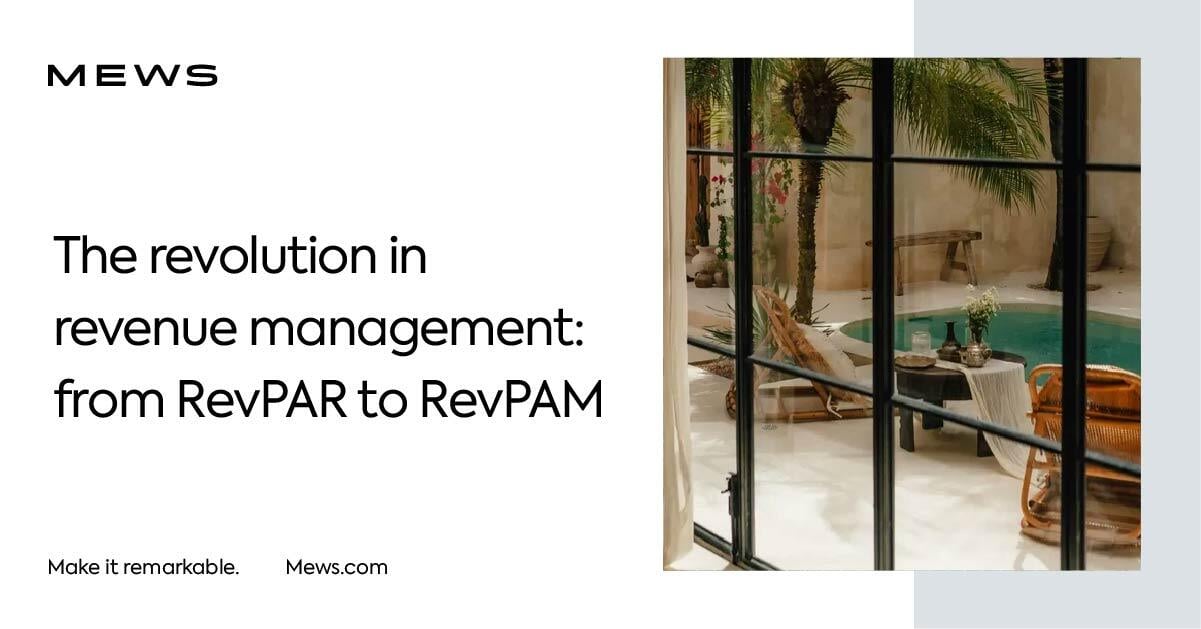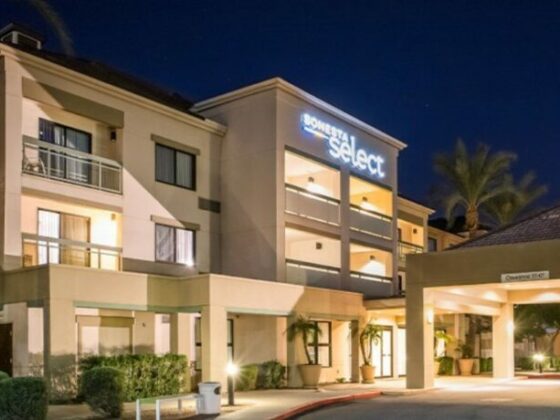
The rise of RevPAM
The podcast covered plenty of fertile ground, and we didn’t want any non-German speakers to miss out. So here are the top six takeaways from their insightful conversation, handily translated into English.
1. New hospitality metrics
Traditional metrics like RevPAR and Average Daily Rate (ADR) often don’t capture the full financial performance of a property. While RevPAR measures revenue per available room, RevPAM extends this perspective to the entire space.
This more comprehensive metric takes into account not only rooms, but also conference rooms, restaurants, spas, parking lots and other areas. This gives hoteliers deeper insight into the profitability of their entire portfolio and allows them to manage investments in a targeted manner to maximize revenue from different hotel areas.
But RevPAM isn’t the only essential metric for the new era of hospitality. Download The New Era of Hospitality Metrics for Revenue Managers.
2. Flexibility in room management
The ability to book rooms and other spaces at variable time intervals – be it hourly, daily, weekly or even monthly – offers significant advantages to properties. Instead of selling rooms for just one night, they can also be offered for shorter periods such as hours or for longer periods such as weeks or months, maximizing sales.
This means that rooms no longer remain unused. Co-working spaces, conference rooms and similar services can be made available not only to guests but also to the local community, which is especially beneficial for short-term requirements or temporary use. For example, empty rooms or the hotel lobby can be used for various events, while restaurants can offer special packages for groups.
Continuously reviewing and adjusting space utilization based on RevPAM data can unlock additional revenue streams and increase overall profitability. This ensures more sales without having to invest in new extensions. The secret lies in analyzing existing resources and making them usable that were previously used free of charge. After all, it’s not just your accommodation that benefits from rented parking spaces – your guests also have peace of mind, knowing that they certainly have a place to park their vehicle.
Want more tips on how to unlock additional revenue? Get our guide on the Best Ways to Reimagine Your Hotel Spaces.
3. Not all PMSs are the same
There are many property management systems (PMSs) on the market, but there are key differences between them. It’s important to choose a PMS that offers versatile features, such as upselling options throughout the guest journey and easy connectivity to other hospitality software. If guests can add breakfast or parking to their booking with one click, they’re more likely to book more than originally planned.
It’s also important for PMS providers to be clear that change is a process that doesn’t happen overnight. They must provide customers with a reliable system and accompany them step by step on their journey to successful, modern accommodation. In other words, be a true partner.
4. The right mindset is key
A key factor in the successful implementation of RevPAM is the mindset of the entire team, from managers to employees. There is often resistance to change, especially when traditional metrics like RevPAR have served as a benchmark for many years and have been well understood and accepted by the workforce. Some may not understand why a room that has been offered free of charge for decades should suddenly cost something.
However, it’s crucial that all stakeholders recognize and internalize the necessity and benefits of the new metric. By sharing concrete examples and case studies that demonstrate RevPAM’s positive impact on property revenue and overall efficiency, adoption and support for this innovative approach can be further strengthened.
5. Training and education are a must
The transition to RevPAM requires a culture of learning and openness. Hoteliers should actively communicate with their teams about why this change is necessary and what long-term benefits it brings to the profitability and competitiveness of the property.
This new key metric must first be understood so that it can be measured correctly. Managers must also be clear about what exactly they want to achieve, what they have at their disposal and what they can do with it.
6. Revenue management is more than just numbers and data
Effective revenue management requires continuous review and analysis of data and figures. This applies to both existing offers and newly added rooms such as parking spaces and conference rooms. Through regular data analysis, hoteliers and hoteliers can determine which areas are profitable and which may require adjustments.
This data-driven approach makes it possible to make informed decisions to maximize revenue and constantly improve the efficiency of the entire property. RevPAM helps identify areas where costs can be reduced, or revenue increased to maximize profitability.
Learn more with Mews
Moving from RevPAR to RevPAM provides properties with a more comprehensive view of their revenue and allows for a more accurate assessment and optimization of profitability. To successfully capitalize on this metric, hotels should embrace modern technology, optimize their use of space, and be willing to implement change.
At Mews, we understand that the move from RevPAR to RevPAM is a significant step towards a future-proof and successful business strategy. As a reliable partner, we’re happy to support you on this path. If you’re interested in the topic and want to learn more about how to diversify your hotel revenue and optimize your existing space, get our free guide.






